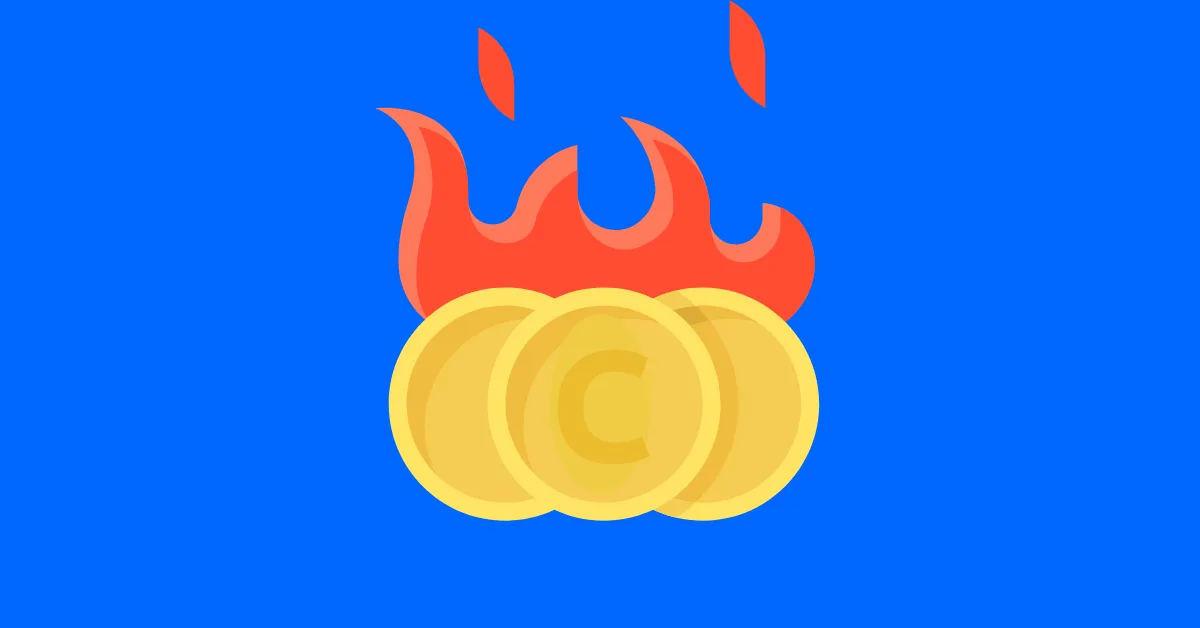
What if I tell you that you can earn more while holding the cryptocurrencies that are burnt?
Will you believe me? I’m sure you will not believe or might be you’re confused.
Before coming to any such conclusion, let’s get cleared with the whole concept of Coin Burn…
A wide range of coins and tokens have adopted the unique concept of Coin burn. Usually the Initial Coin Offerings (ICOs) integrate a coin burn mechanism for the unsold tokens at the end of the token sale. Also, major cryptocurrency exchanges like Binance has also adopted the coin burning mechanism to add value to those who hold BNB.
As the name suggests, Coin Burn is a process of intentionally burning or eliminating the coins rendering them to be unusable. Coin burn also means sending the crypto coins to such a public address where private keys are unknown or unobtainable. Hence, making the coins sent on that address unusable or inaccessible.
Basically, this is done by transferring a portion of coins to an ‘eater address’. This is often referred to as ‘black hole’ because no one can obtain the private keys to that address. Hence, the coins sent to an eater address are unrecoverable and can never be used again.
Well, when you have known what coin burn actually means, now is the time to know how this Coin Burn mechanism works. The Coin burn process is carried out in the following order:
The successful execution of coin burn function will destroy the coins forever. Also, it is impossible to recover these coins after they are burnt.
Proof of Burn is a substitute consensus algorithm which addresses the energy consumption problem of Proof of Work. Basically, the Proof of Burn is referred to as Proof of Work without waste of energy. You can also use it to bootstrap one cryptocurrency off another. Eventually, the central concept of Proof of Burn is that individuals burn their coins to mine in POB consensus protocol. This technique follows the concept of “burning” or “destroying” coins that the miners hold and then grant them their mining rights.
When you own coins why would anyone burn coins? Well, there are a few reasons why should someone burn coins:
The main reason why coins are burnt is that they encourage long time commitment and time of project. Hence, enabling a greater price stability for coins, as long time investors do not wish to sell or spend their coins.
The Coin burn mechanism behaves as a natural way to safeguard against Distributed Denial of Service Attack (DDOS). Hence this prevents spam transactions from clogging the network. Usually, coin burning initiates a cost for executing a transaction. There are a few projects that have integrated a burning mechanism where a small portion of the amount sent is burnt automatically. The cryptocurrency, Ripple (XRP) is a project which utilizes this burning model.
Usually, the newly created coins after coin burn have value only because of coin burn. Whenever the developers create cryptocurrency, interested parties invest in it. The cryptocurrencies that the investors now receive has value because of the demand. Also, a similar value is transferred to the developers.
Proof of burn mechanism occurs because it is applicable to pay for transaction fees. For example, Ripple uses this method. Whenever a Ripple transaction is made, a minor amount of that transaction is burnt. With this, the user pays for transaction and the Ripple network benefits immensely from the use of Ripple.
The coin burn mechanism is a novel approach for cryptocurrency projects with various features and implementations that can be adopted. Integrating coin burn is quite wide-ranging, starting from a more environmentally-friendly consensus mechanism to enhancing long-term value for coin holders. Also, coin burn represents a viable tool in preserving wealth for all participants in the network.
What is your opinion on this Coin Burn Concept? Share your thoughts on our Twitter and Facebook pages.
CoinPedia has been delivering accurate and timely cryptocurrency and blockchain updates since 2017. All content is created by our expert panel of analysts and journalists, following strict Editorial Guidelines based on E-E-A-T (Experience, Expertise, Authoritativeness, Trustworthiness). Every article is fact-checked against reputable sources to ensure accuracy, transparency, and reliability. Our review policy guarantees unbiased evaluations when recommending exchanges, platforms, or tools. We strive to provide timely updates about everything crypto & blockchain, right from startups to industry majors.
All opinions and insights shared represent the author's own views on current market conditions. Please do your own research before making investment decisions. Neither the writer nor the publication assumes responsibility for your financial choices.
Sponsored content and affiliate links may appear on our site. Advertisements are marked clearly, and our editorial content remains entirely independent from our ad partners.
Investors searching for the next high-upside opportunity are now comparing this $0.035 emerging crypto to…
The LINK price remains capped and under bearish pressure despite there being strong signs of…
Strategy, the company led by Bitcoin advocate Michael Saylor, has successfully held its place in…
The XRP price is currently in a decisive standoff, as its price is capped despite…
Story Highlights The Live Price Of XRP Predictions suggest XRP could reach $5.05 by the…
Story Highlights Bitcoin is currently trading at: Predictions suggest BTC could reach $175K in 2025.…